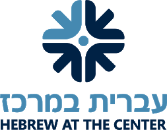Students Express, Experience, and Extend Hebrew Learning on Zoo Field Trip
October 27, 2016 by
“Hiney Chitah!” (Here is a Cheetah!)
“Ani roeh Dov Panda betzeva shachor velavan.” (I see a Panda Bear whose colors are black and white.)
“Hapanda ochelet alim.” (The panda is eating leaves.)
“Hadov yoshev al sela.” (The bear is sitting on a rock.)
These conversations in Hebrew and many more were heard not in the Biblical Zoo in Jerusalem, but in the National Zoo in Washington, DC. JPDS-NC Third Graders went on their first “Hebrew field trip” as a culmination of their unit on animals and to give them the opportunity to use their new vocabulary and language acquisition skills in a real life situation. Their task was to use the language introduced in Hebrew class to describe each animal, its surroundings and habitat, and what the animal did while being observed. For several hours, students traveled in groups and observed, discussed, and compiled written reports about different animals. The results were amazing – Hebrew could be heard throughout the zoo while students expressed and recorded what they saw. This trip reflects the Proficiency Approach that we use at JPDS-NC and more specifically, one of our curricular goals for third graders – moving away from one-word responses to using fuller language as the children construct sentences independently.
We began this unit with a focus on helping students express increasingly sophisticated information about themselves. One of our academic aims has been to empower and support students to extend their Hebrew language skills, moving from sharing basic personal data to talking about their likes and dislikes, their hobbies, and their daily routines. To that end, we began the school year with students practicing different sentence structures and utilizing both new and old vocabulary in their introduction of themselves to their peers. To further enhance their skills, students were tasked with introducing other children, and encouraged to use a wider range of verbs to describe their friends’ interests and activities. Therefore, the children added verbs such as jump, play, run, etc. to their Hebrew lexicons. As they formed their presentations about the children in class, students also had opportunities to add frequently used verbs, adjectives, body parts, and number in their sentences – all the while paying attention to using correct syntax.
We recognized that to deepen and reinforce the children’s learning, we needed to add new focal interest for the students. We picked the topic of animals because it is of interest to many third grade students, and we know that delving into an area of personal interest increases students’ motivation to learn and use the language, a practice consistent with the principles of the Proficiency Approach. We spent a couple weeks in class learning and practicing expressions and vocabulary related to animals, including language describing their appearance, their habitats, various types of activities of different animals, their diets, and more. To support our learning, we also had points of integration with the students’ General Studies and Judaic Studies learning. As part of their Third Grade States Project, students are learning about their state bird, state animal, and state flower. Students also talked about Tzaar Baalei Hayim, the ethical treatment of animals, in Judaic Studies. Soon, it was time for students to pull all the learning together and practice their new skills – and for the teachers to assess the students’ ability to use the new skills that they had acquired.
The Proficiency Approach measures language proficiency by evaluating the ability of students to manage in real life situations, measuring the ways that the students effectively communicate and achieve goals related to their circumstances. Therefore, the best way to evaluate and assess proficiency is to present students with a task or a challenge that they need to deal with. In our case, going to the zoo to observe, discuss, and document information about animals enabled students to utilize and extend their Hebrew skills in a real life situation. It was clear that the experience increased the children’s motivation and sense of urgency in using the language that they learned in class in order to participate in a fun learning experience. We are grateful to all the parent volunteers and educators who made this Hebrew field trip possible. It was thrilling to watch the students engage so fully in the process, learning with enthusiasm and a keen effort to speak Hebrew. Of course, we got extra help from the Pandas who displayed in their den in full glory. We would continue exploring and finding new ways to help our students engage in Hebrew in challenging, interesting and fun ways.






